Astrotracker in two evenings
- Tutorial
After reading an article about amateur astronomy, I got the idea to shoot stars using an ordinary camera without a telescope. The article suggested the idea of astrotrackers - devices for compensating the rotation of the starry sky at slow shutter speeds.
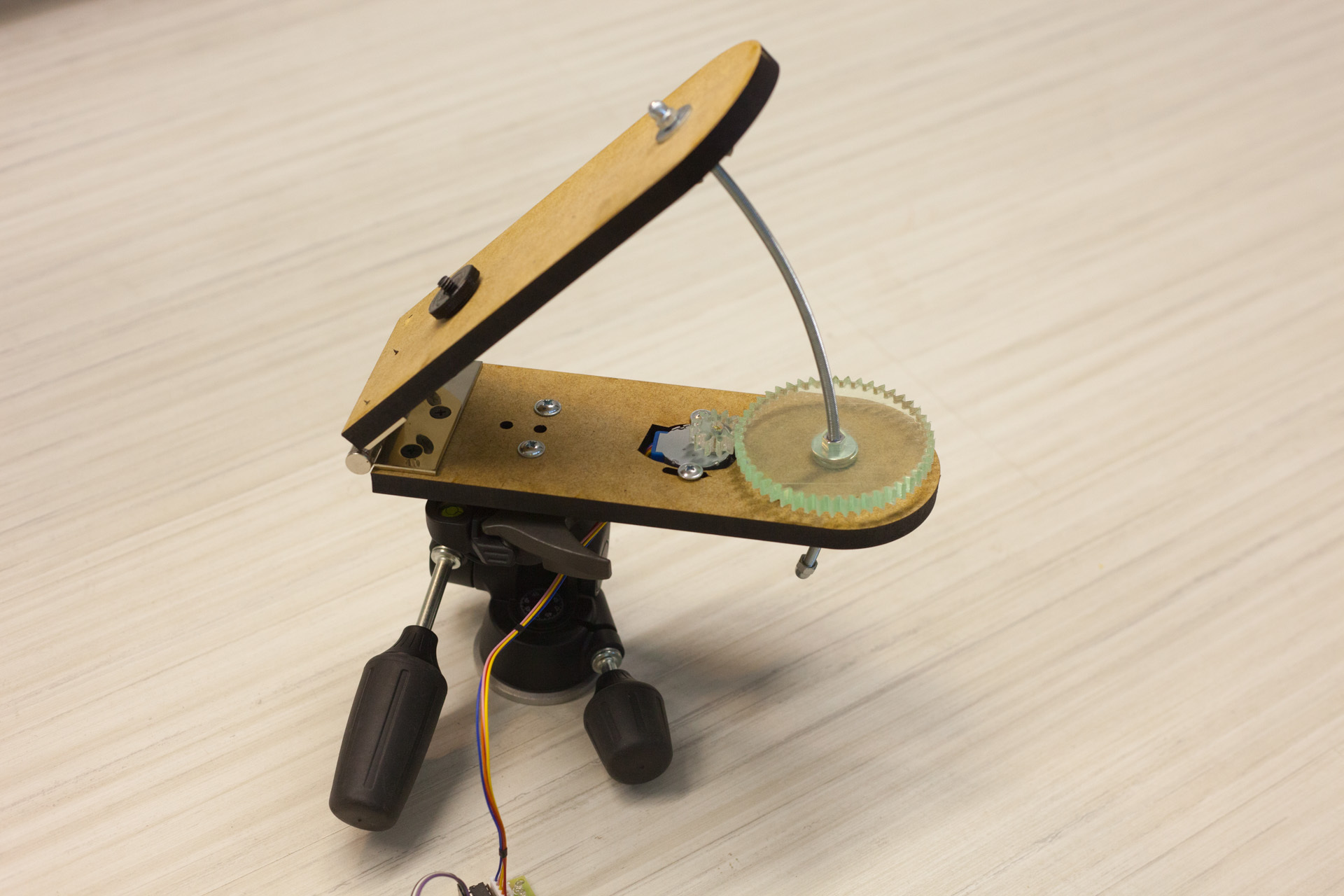
Googling, I found that they can be easily bought. But the price was biting. For example, the cheapest Vixin Ploarie Star Tracker costs from $ 400 + shipping. And its carrying capacity was in doubt. In the future, I planned to switch from a wide-angle lens to 70-200 / 2.8, which together with the camera weigh under one and a half kg.
In the process of searching, it turned out that people make themselves the so-called Barn Door trackers: one , two and others. Simply put, the door is from the barn. The principle of operation is simple - two boards connected by a door canopy. One of them rotates at the same speed as the earth around its axis. The axis of the canopy directs to the North Star. The bottom board is placed on a tripod, and a tripod head with a camera is placed on the moving half.
Under the cut a lot of pictures.
I got the idea to make such a tracker myself. For without it you can only shoot star tracks like this.

According to estimates, almost everything was on hand for this. I decided to take this tracker as a basis . There, in the description, there are methods for calculating the main parameters.
The 10mm MDF material was selected as material was the experience of his laser cutting in the workshop. The material is cheap, comfortable. In terms of reliability, it’s too early to say. Let's look at the trial operation.
First, in the CAD program, I drew a model of what needed to be done. To do this, I had to calculate the radius and speed of rotation of the stud. According to my estimates, the radius turned out to be 182.85 mm for the M5 stud with a 0.8 mm thread pitch and a nut rotation speed of 1 rpm. The hairpin was chosen by the M5 as a compromise between strength and thread pitch.

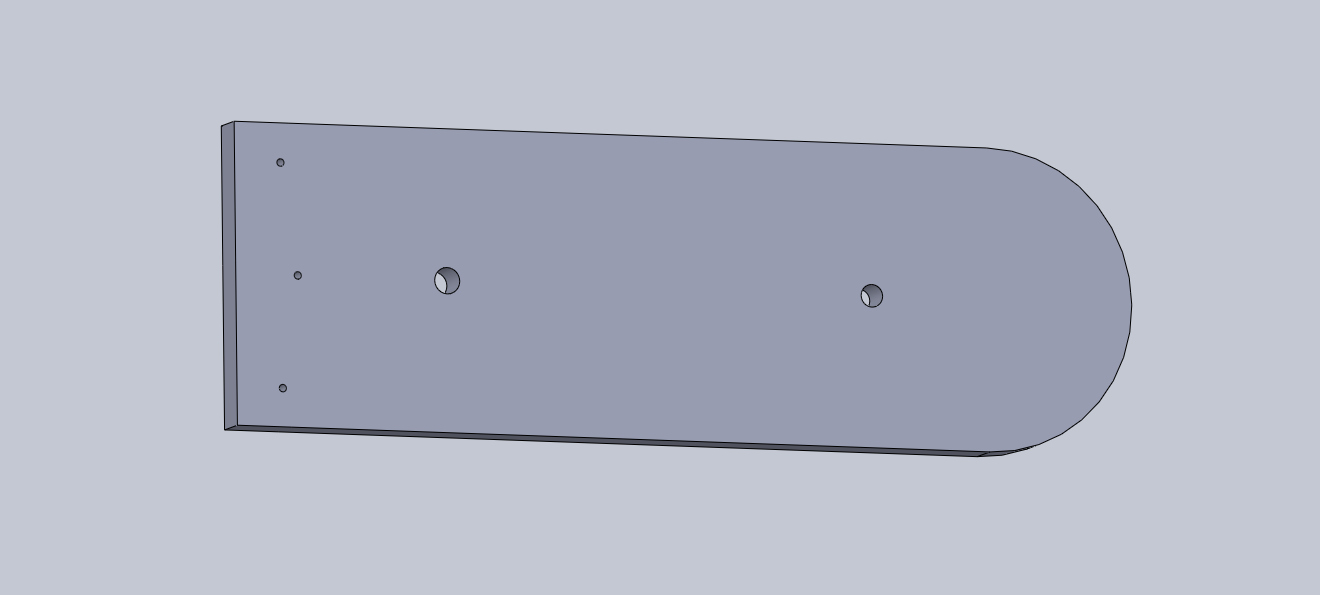
Because subsequently I wanted to shoot at 70-200 / 2.8, I had to calculate how many steps the engine needed to take per minute so that there was no smear within one pixel. After all the estimates, I made a ten-fold margin so that the errors in the manufacture of the structure would not drastically worsen the situation.
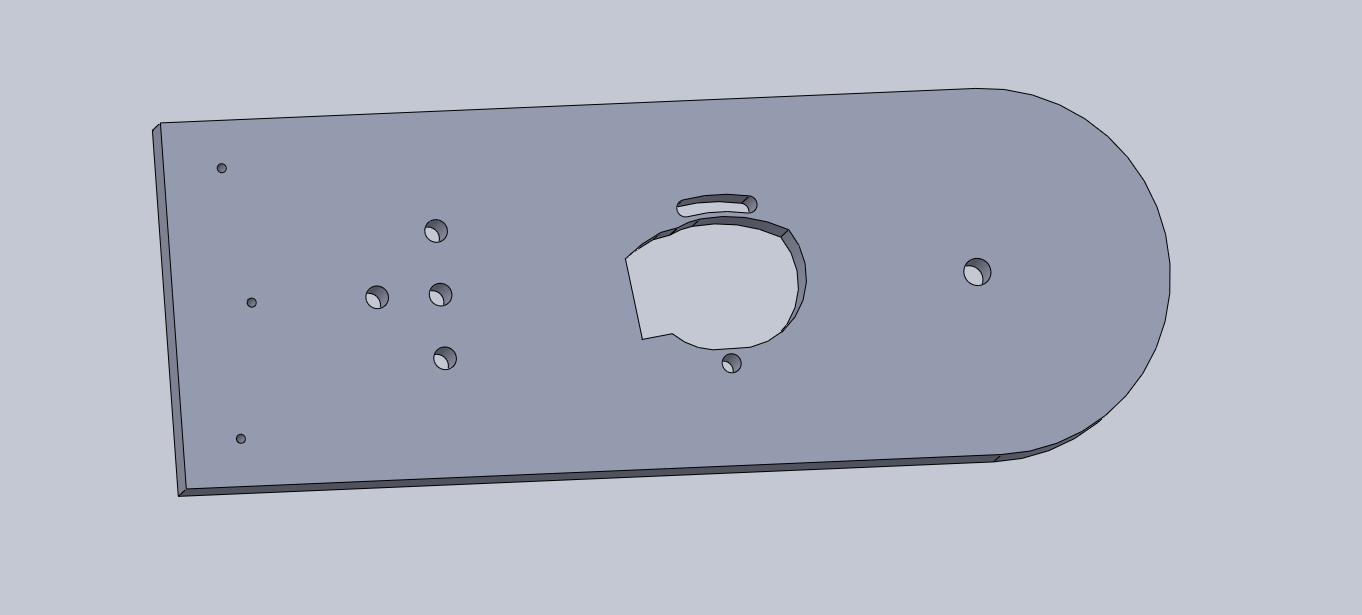
To rotate the nut on the stud in the original design used gears. But to find gears for adequate money did not work. Were only on e-bay and even then for $ 10 + with delivery per month. Therefore, I also decided to cut the gears with a laser from MDF or acrylic.

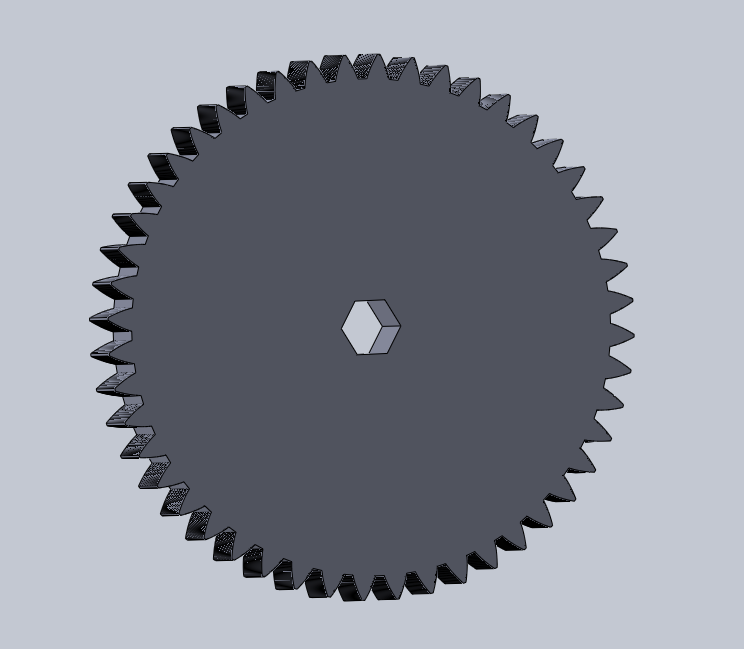
As the engine used a stepper Chinese 28BYJ-48. I had several of them for a long time, I wanted to play everything. They cost with a controller board less than $ 2 on ebay with delivery. It is powered by 5-12 volts. Makes one revolution of the shaft in 64 steps. It also has a gearbox with a coefficient close to 63.68395: 1. Thus, the external axis rotates in 2037 steps in 4-step mode or 4075 steps in 8-step mode. Torque is not big, but for this task it is more than enough. On the Internet they write that it was possible to get about 15 rpm from him, but with an increase in power to 12V. I decided that 4 rpm was enough for me and made gears with a 4: 1 ratio so that for four turns of the engine the nut on the stud would make one revolution.

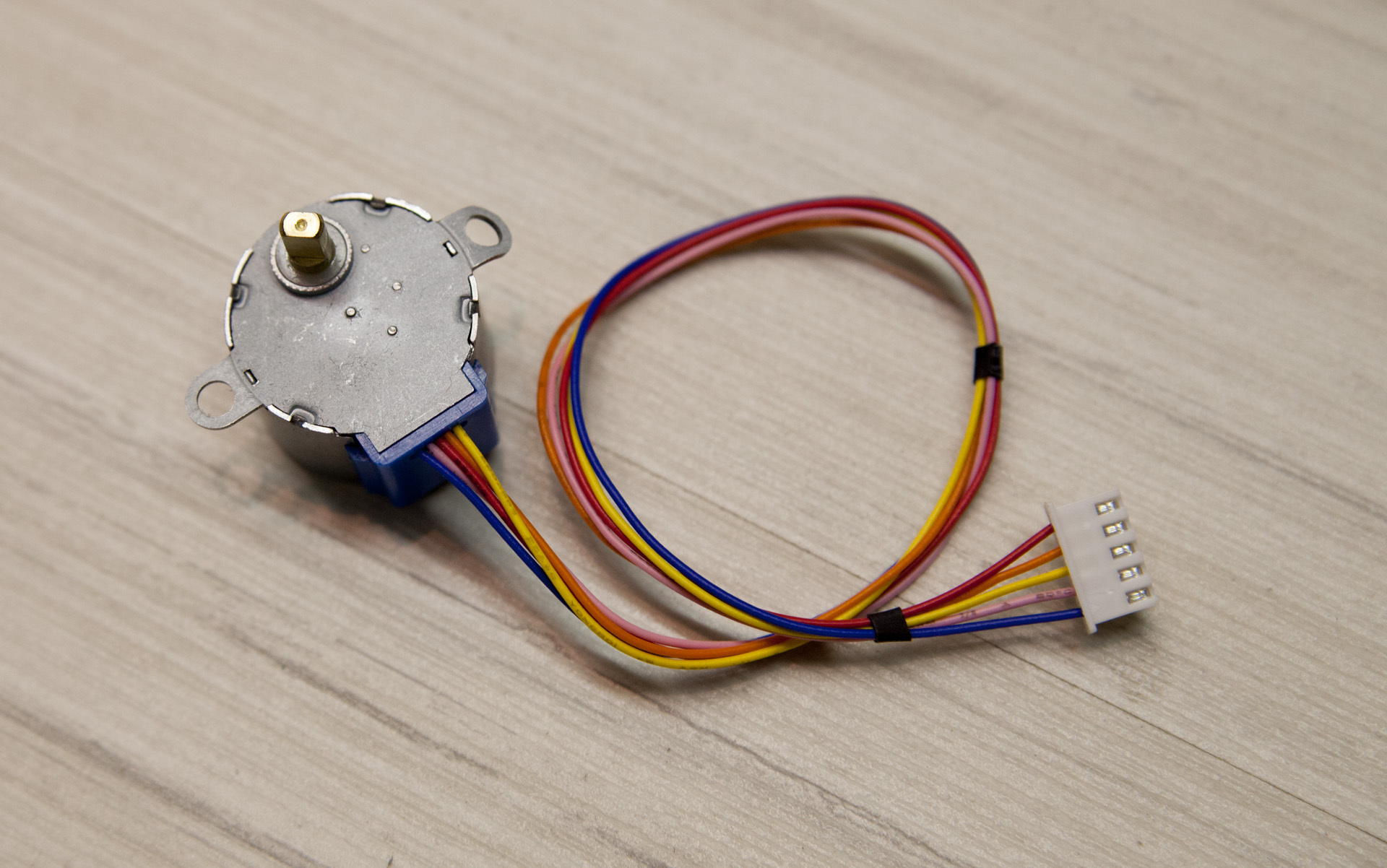
In the store I bought a door canopy with minimal backlash. Its size and became the width of the board. I bought a hairpin there. In another store I dialed fixing material. On fasteners, MDF with cutting, the loop took about 100 UAH. ($ 8.3). I ordered a small ball head on ebay, but so far I have set the usual one from the old tripod.
In the lower half, I made holes for attaching to the removable platform of the Manfrotto 804RC2 photo head I had a short one. Also made holes for the engine. I envisaged adjusting the distance between the gears by rotating the engine around one of the mounting holes.
When I was pleased with the drawing, I took it to the cutting and brought here such wonderful but strongly smelling ashes parts.
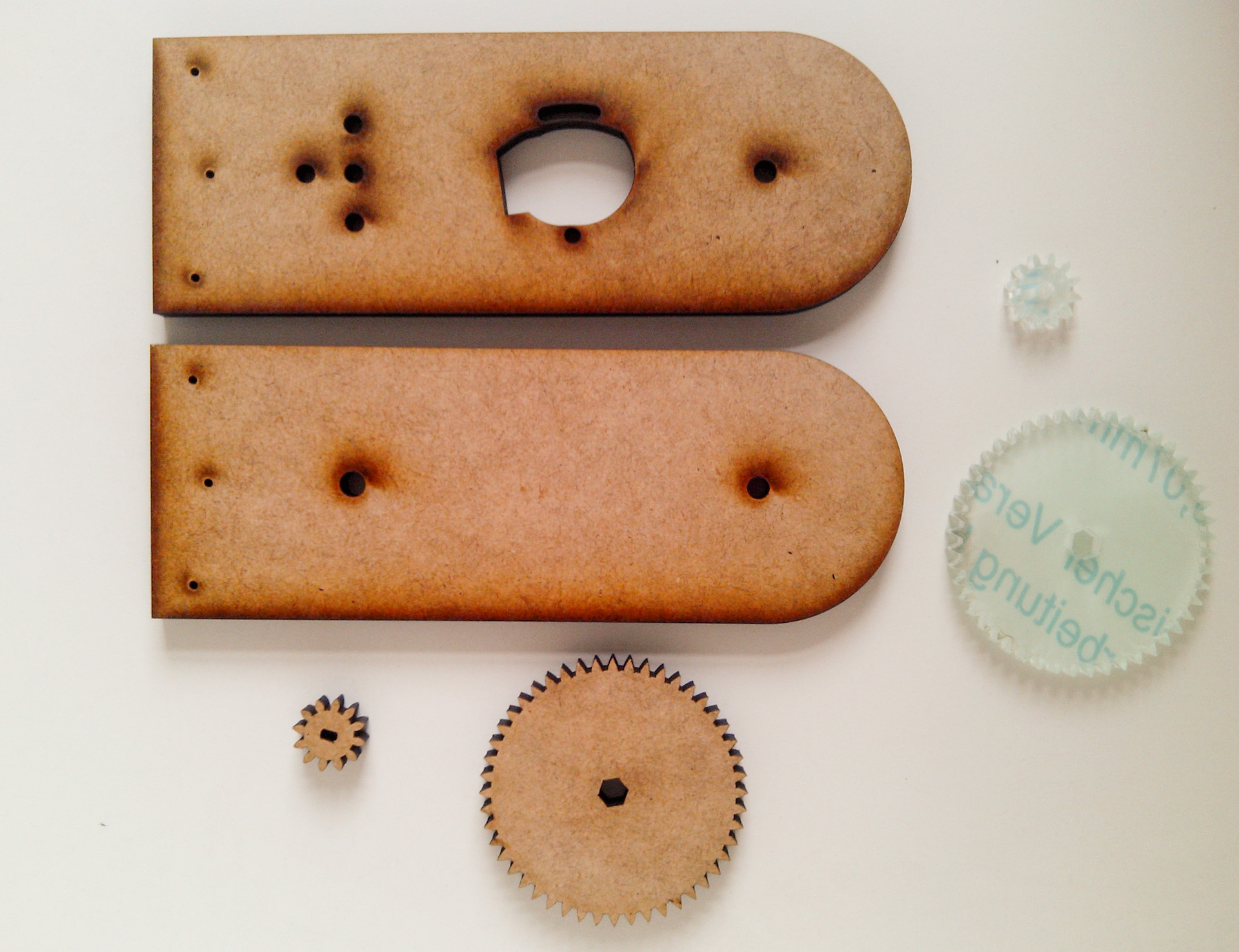
Gears were cut from both acrylic and MDF. With acrylic, it turned out badly, the ends of the teeth melted. I had to process them with a file. Subjectively, MDF turned out to be softer. But let's see in combat conditions.

Fastening the gear to the nut is very simple - a hole in the shape of a hexagon with a minimum tolerance. Acrylic - 8mm. Just fit 2 M5 nuts.
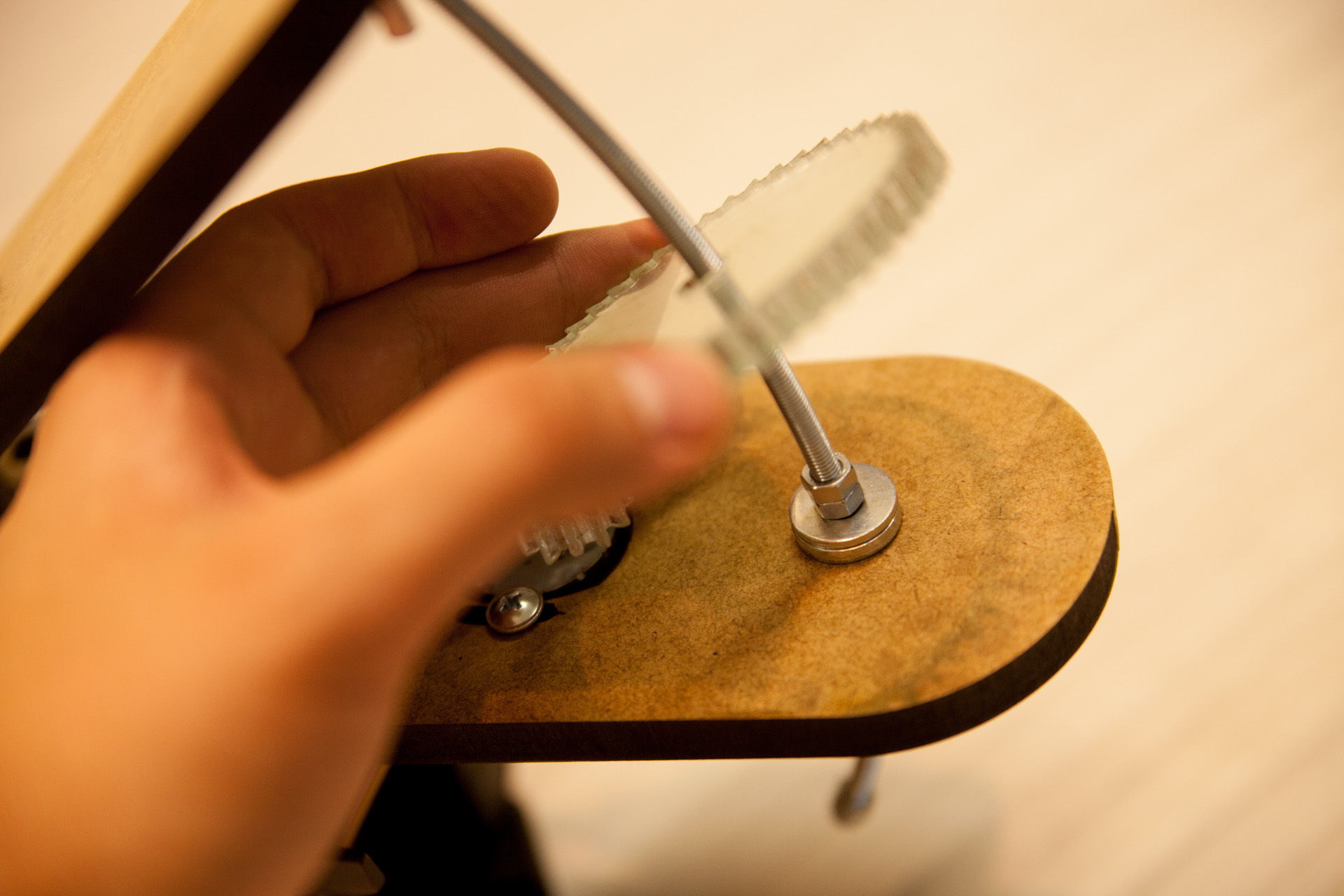
In order for the accuracy of reference to be higher, the stud must be bent by an arc. This is done as follows: we print on the printer two concentric circles of the desired diameter so that their edges are the size of the stud. And slowly we bend it and constantly apply it to the template, check it. It is better to bend the entire hairpin at once (its length is 1 meter) - this is easier. Short - do not bend gently with your hands. In 10 minutes everything was ready.
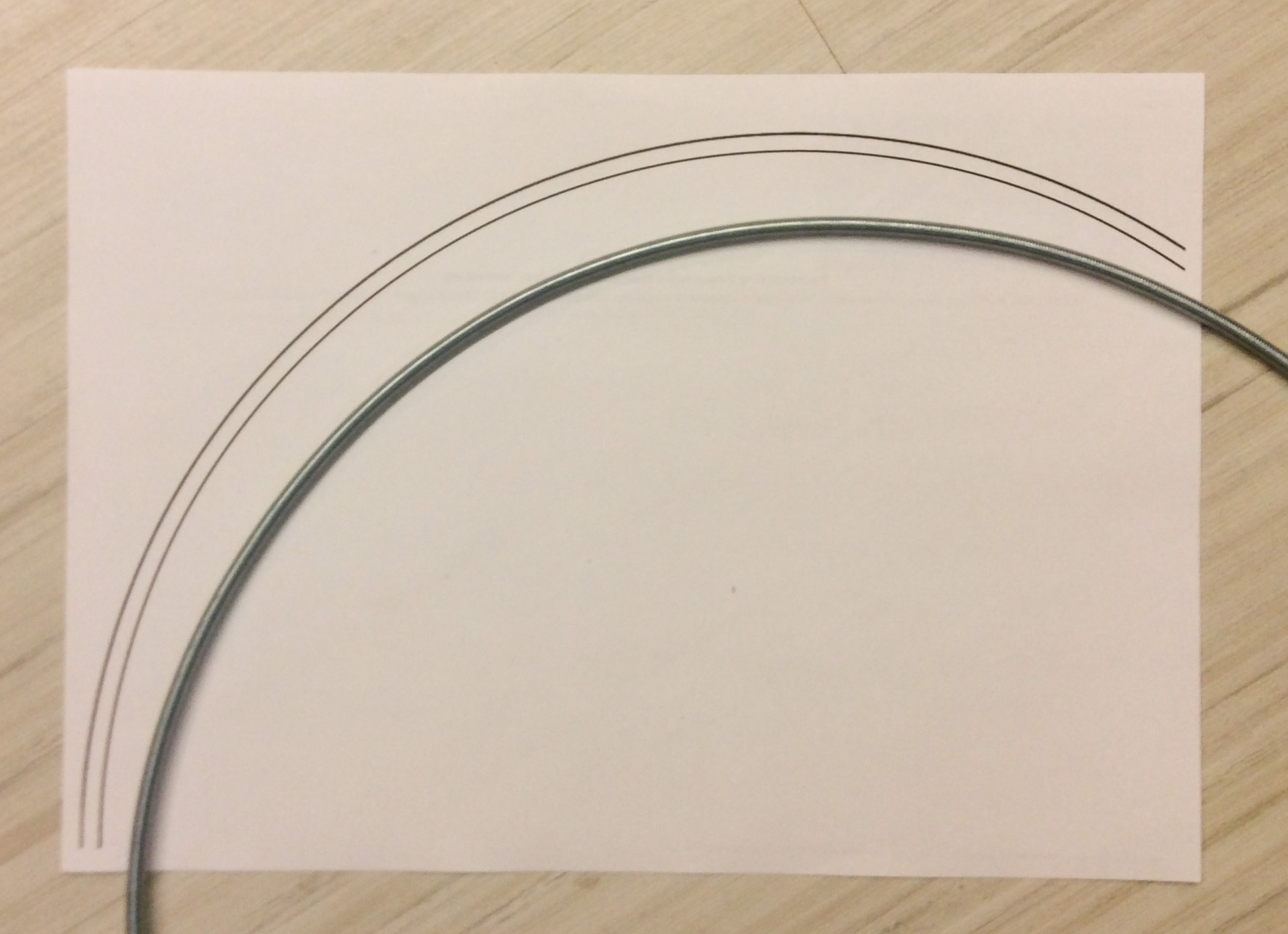

We cut the excess with a dremel. I left a segment of the order of 25 centimeters. This is enough for more than 5 hours of reference.
Putting it all together:
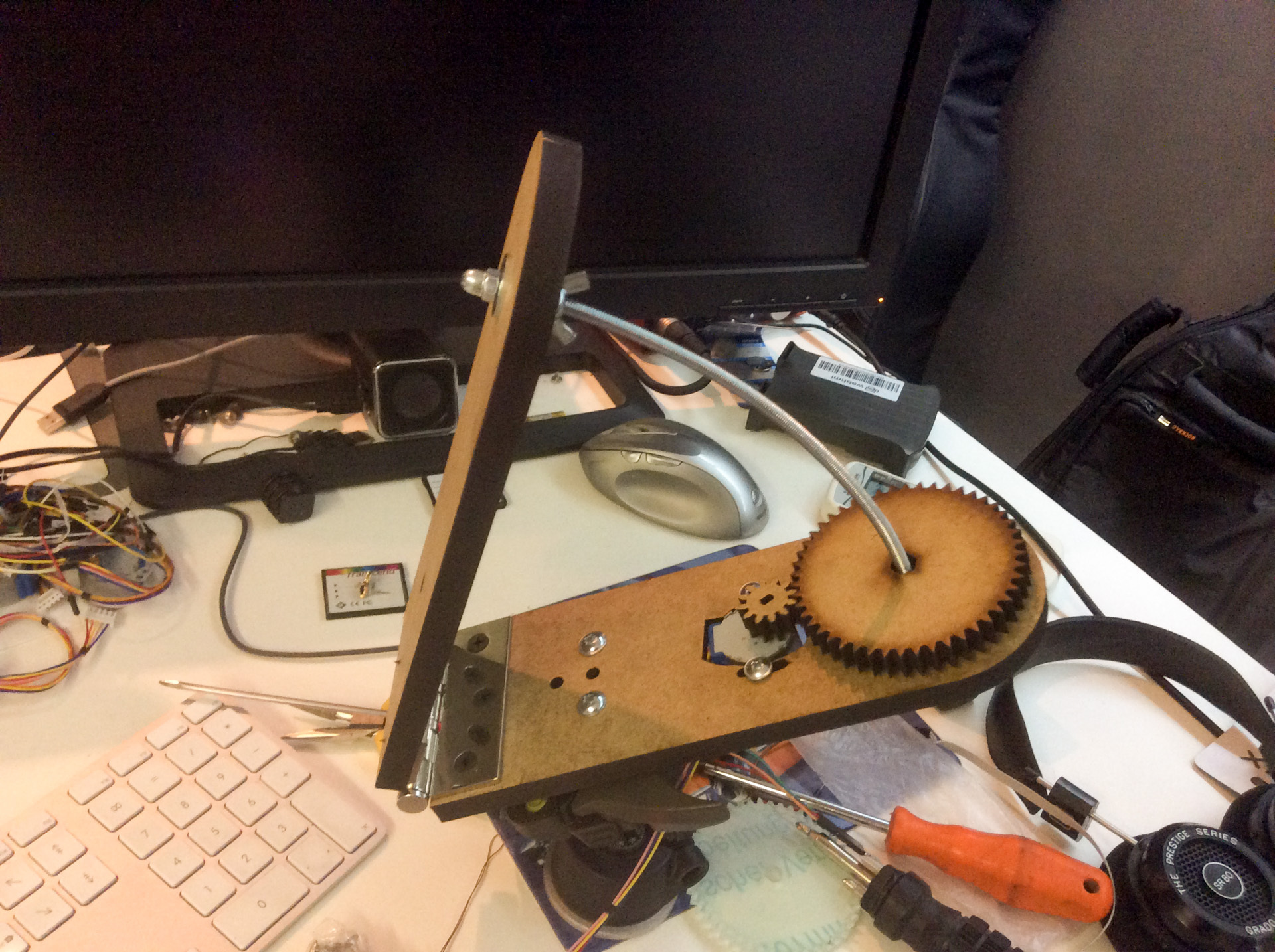
Check the rotation on a previously written sketch for arduino.
I used the LCD Keypad shield to make it convenient to select the rotation speed.
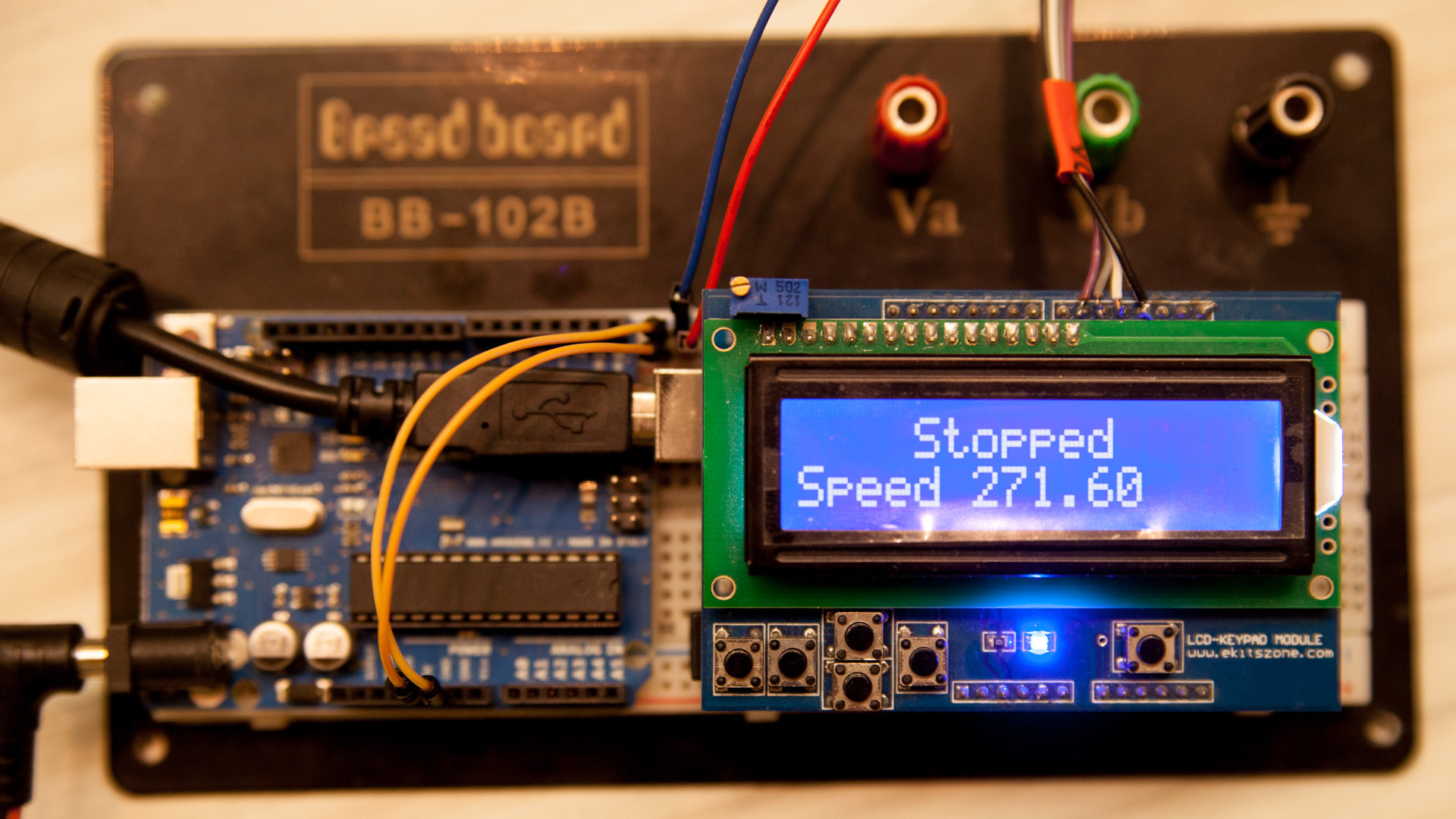
There is a Start / Stop button. There is an increment / decrement of 25 steps and 0.1 step. Speed is measured in steps per second. Estimated speed should be 271.6 steps per second. But I can’t check yet. it rains all the time.
General view of the resulting design
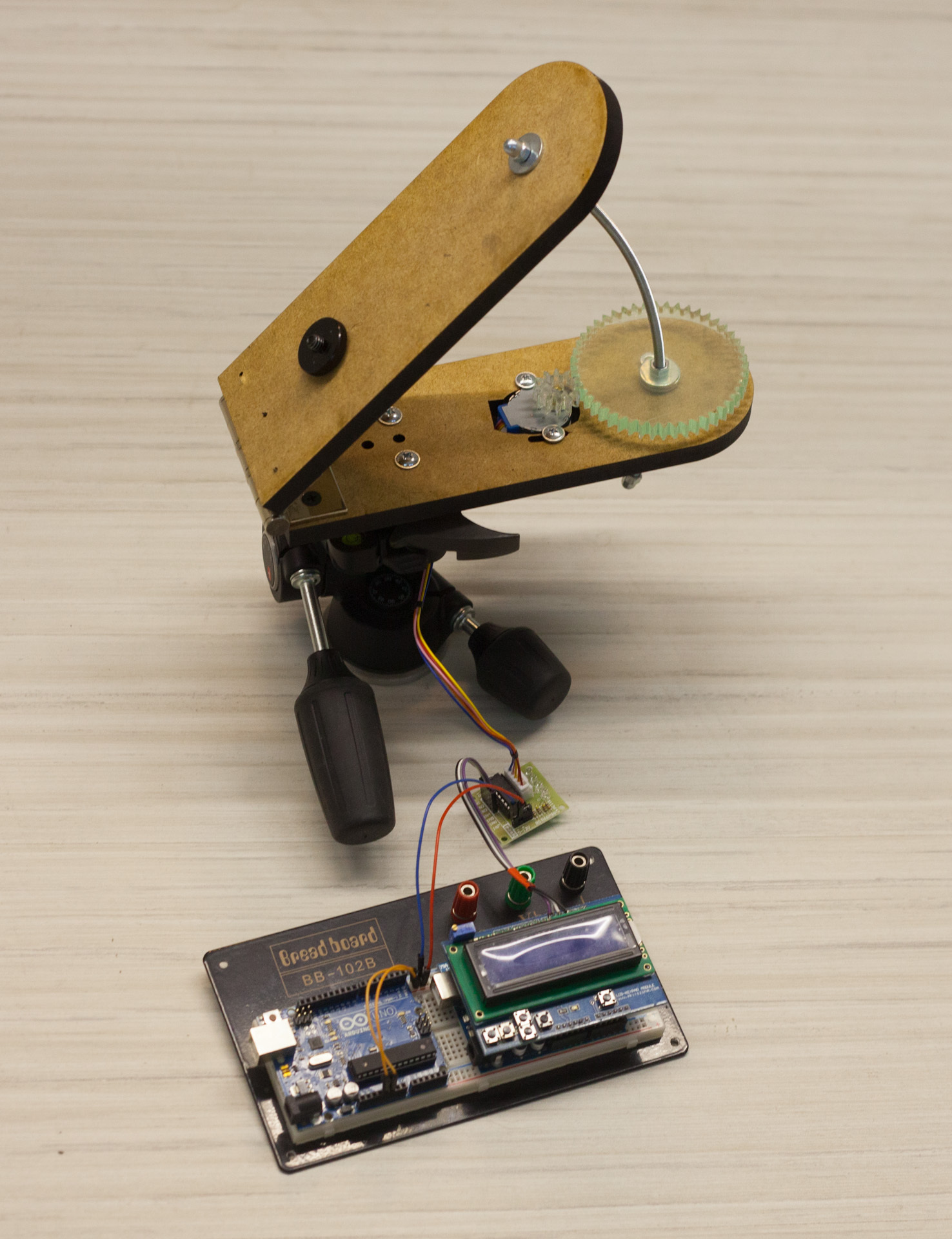
There are two arduins. Never mind. One is used as a power source for the engine.
Work process video
Now the weather is disgusting. Rains. As soon as the stars are visible I will proceed to test the mount in the field.

Googling, I found that they can be easily bought. But the price was biting. For example, the cheapest Vixin Ploarie Star Tracker costs from $ 400 + shipping. And its carrying capacity was in doubt. In the future, I planned to switch from a wide-angle lens to 70-200 / 2.8, which together with the camera weigh under one and a half kg.
In the process of searching, it turned out that people make themselves the so-called Barn Door trackers: one , two and others. Simply put, the door is from the barn. The principle of operation is simple - two boards connected by a door canopy. One of them rotates at the same speed as the earth around its axis. The axis of the canopy directs to the North Star. The bottom board is placed on a tripod, and a tripod head with a camera is placed on the moving half.
Under the cut a lot of pictures.
I got the idea to make such a tracker myself. For without it you can only shoot star tracks like this.

According to estimates, almost everything was on hand for this. I decided to take this tracker as a basis . There, in the description, there are methods for calculating the main parameters.
The 10mm MDF material was selected as material was the experience of his laser cutting in the workshop. The material is cheap, comfortable. In terms of reliability, it’s too early to say. Let's look at the trial operation.
First, in the CAD program, I drew a model of what needed to be done. To do this, I had to calculate the radius and speed of rotation of the stud. According to my estimates, the radius turned out to be 182.85 mm for the M5 stud with a 0.8 mm thread pitch and a nut rotation speed of 1 rpm. The hairpin was chosen by the M5 as a compromise between strength and thread pitch.


Because subsequently I wanted to shoot at 70-200 / 2.8, I had to calculate how many steps the engine needed to take per minute so that there was no smear within one pixel. After all the estimates, I made a ten-fold margin so that the errors in the manufacture of the structure would not drastically worsen the situation.

To rotate the nut on the stud in the original design used gears. But to find gears for adequate money did not work. Were only on e-bay and even then for $ 10 + with delivery per month. Therefore, I also decided to cut the gears with a laser from MDF or acrylic.


As the engine used a stepper Chinese 28BYJ-48. I had several of them for a long time, I wanted to play everything. They cost with a controller board less than $ 2 on ebay with delivery. It is powered by 5-12 volts. Makes one revolution of the shaft in 64 steps. It also has a gearbox with a coefficient close to 63.68395: 1. Thus, the external axis rotates in 2037 steps in 4-step mode or 4075 steps in 8-step mode. Torque is not big, but for this task it is more than enough. On the Internet they write that it was possible to get about 15 rpm from him, but with an increase in power to 12V. I decided that 4 rpm was enough for me and made gears with a 4: 1 ratio so that for four turns of the engine the nut on the stud would make one revolution.


In the store I bought a door canopy with minimal backlash. Its size and became the width of the board. I bought a hairpin there. In another store I dialed fixing material. On fasteners, MDF with cutting, the loop took about 100 UAH. ($ 8.3). I ordered a small ball head on ebay, but so far I have set the usual one from the old tripod.
In the lower half, I made holes for attaching to the removable platform of the Manfrotto 804RC2 photo head I had a short one. Also made holes for the engine. I envisaged adjusting the distance between the gears by rotating the engine around one of the mounting holes.
When I was pleased with the drawing, I took it to the cutting and brought here such wonderful but strongly smelling ashes parts.

Gears were cut from both acrylic and MDF. With acrylic, it turned out badly, the ends of the teeth melted. I had to process them with a file. Subjectively, MDF turned out to be softer. But let's see in combat conditions.

Fastening the gear to the nut is very simple - a hole in the shape of a hexagon with a minimum tolerance. Acrylic - 8mm. Just fit 2 M5 nuts.

In order for the accuracy of reference to be higher, the stud must be bent by an arc. This is done as follows: we print on the printer two concentric circles of the desired diameter so that their edges are the size of the stud. And slowly we bend it and constantly apply it to the template, check it. It is better to bend the entire hairpin at once (its length is 1 meter) - this is easier. Short - do not bend gently with your hands. In 10 minutes everything was ready.


We cut the excess with a dremel. I left a segment of the order of 25 centimeters. This is enough for more than 5 hours of reference.
Putting it all together:

Check the rotation on a previously written sketch for arduino.
#include
#include
#define HALFSTEP 8
LiquidCrystal lcd(8, 13, 9, 4, 5, 6, 7);
int adc_key_val[5] ={50, 200, 400, 600, 800 };
// Motor pin definitions
#define motorPin1 3 // IN1 on the ULN2003 driver 1
#define motorPin2 4 // IN2 on the ULN2003 driver 1
#define motorPin3 5 // IN3 on the ULN2003 driver 1
#define motorPin4 6 // IN4 on the ULN2003 driver 1
int NUM_KEYS = 5;
int adc_key_in;
int key=-1;
int isRun;
double speeds = 271.6;
int maxspeed = 1245;
AccelStepper stepper1(HALFSTEP, motorPin1, motorPin3, motorPin2, motorPin4);
void setup() {
lcd.clear();
lcd.begin(16, 2);
lcd.setCursor(0,0);
lcd.print(" Stopped ");
lcd.setCursor(0,1);
lcd.print("Speed ");
lcd.print(speeds);
lcd.print(" ");
isRun = 0;
stepper1.setMaxSpeed(maxspeed);
stepper1.setSpeed(speeds);
}
void loop() {
adc_key_in = analogRead(0); // read the value from the sensor
key = get_key(adc_key_in); // convert into key press
if (key >= 0) // if keypress is detected
{
if (key == 1) {
speeds += 0.1;
delay(50);
}
if (key == 2 && speeds > 0) {
speeds -= 0.1;
delay(50);
}
if (key == 0) {
speeds += 10;
}
if (key == 3) {
speeds -= 10;
}
if (speeds>maxspeed) {
speeds = maxspeed;
}
if (speeds<-maxspeed) {
speeds = -maxspeed;
}
if (key == 4) {
isRun = 1 - isRun;
lcd.setCursor(0,0);
if (isRun == 1) {
lcd.print("+++ Running +++ ");
} else {
lcd.print(" Stopped ");
}
delay(250);
}
lcd.setCursor(0, 1);
lcd.print("Speed ");
lcd.print(speeds);
lcd.print(" ");
stepper1.setSpeed(speeds);
delay(50);
}
if (isRun == 1) {
stepper1.runSpeed();
}
}
int get_key(unsigned int input)
{
int k;
for (k = 0; k < NUM_KEYS; k++)
{
if (input < adc_key_val[k])
return k;
}
if (k >= NUM_KEYS)
k = -1; // No valid key pressed
return k;
}
I used the LCD Keypad shield to make it convenient to select the rotation speed.

There is a Start / Stop button. There is an increment / decrement of 25 steps and 0.1 step. Speed is measured in steps per second. Estimated speed should be 271.6 steps per second. But I can’t check yet. it rains all the time.
General view of the resulting design

There are two arduins. Never mind. One is used as a power source for the engine.
Work process video
Now the weather is disgusting. Rains. As soon as the stars are visible I will proceed to test the mount in the field.
